Our Repertoire

LACHY SĄDECKIE
The ethnographic region of Sacz lies in a valley of three mountain rivers in the southern part of Poland. The dances of the Sacz Lachy region are mainly turning polkas done in a variety of ways with various additional elements like stamping, squatting, and lifting one leg. Dancing is interlaced with singing and enhanced with characteristic shouting and whistling.
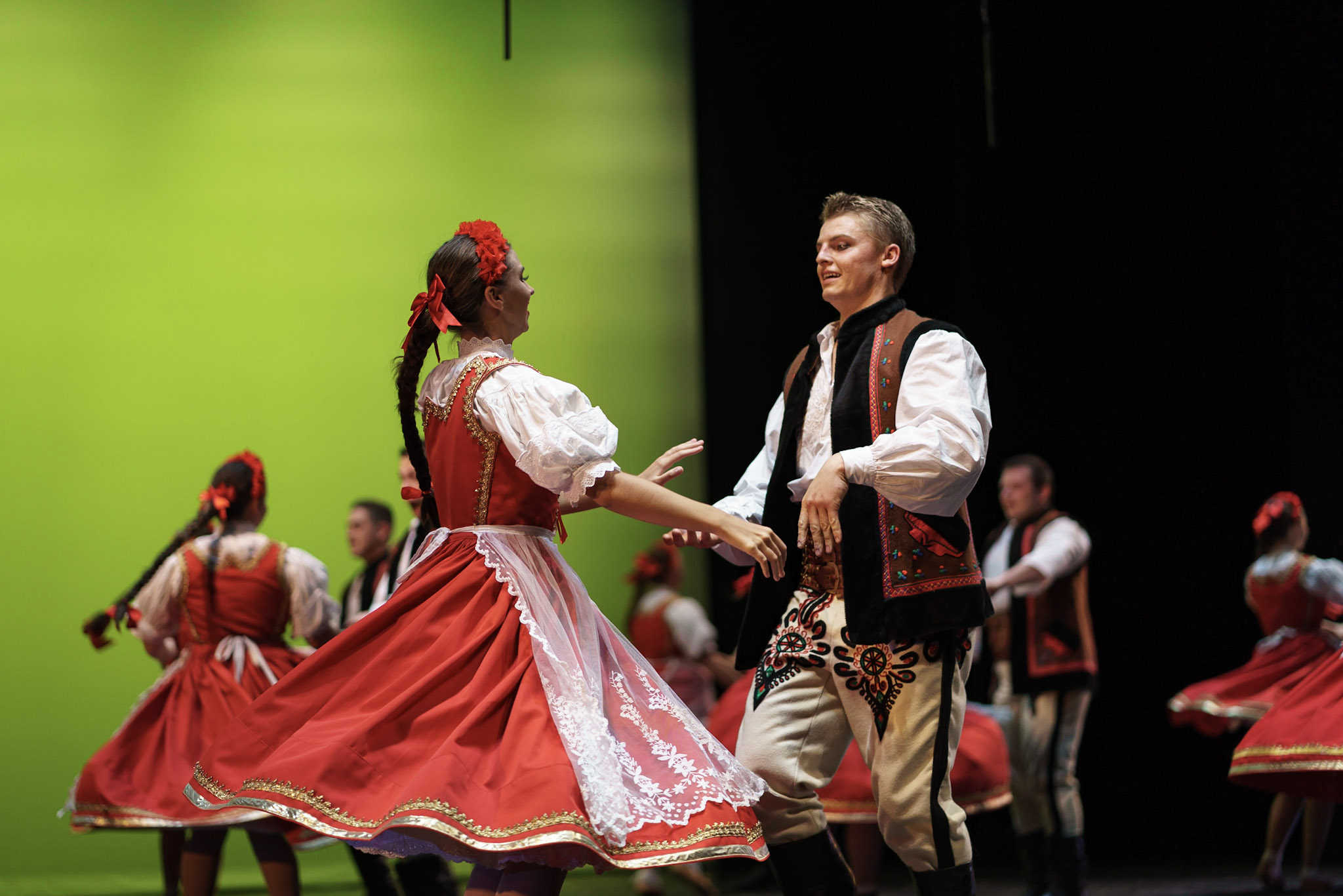
SPISZ
The small region of Spisz is located in south-eastern Poland between the Dunajec River and the Tatry Mountains. This region shares its border with Slovakia but was part of the old Kingdom of Hungary at one time. Its unique folk culture has been created mainly by the mixture of Polish, Hungarian, and German settlers, Wallachian shepherds and Slovak folklore.
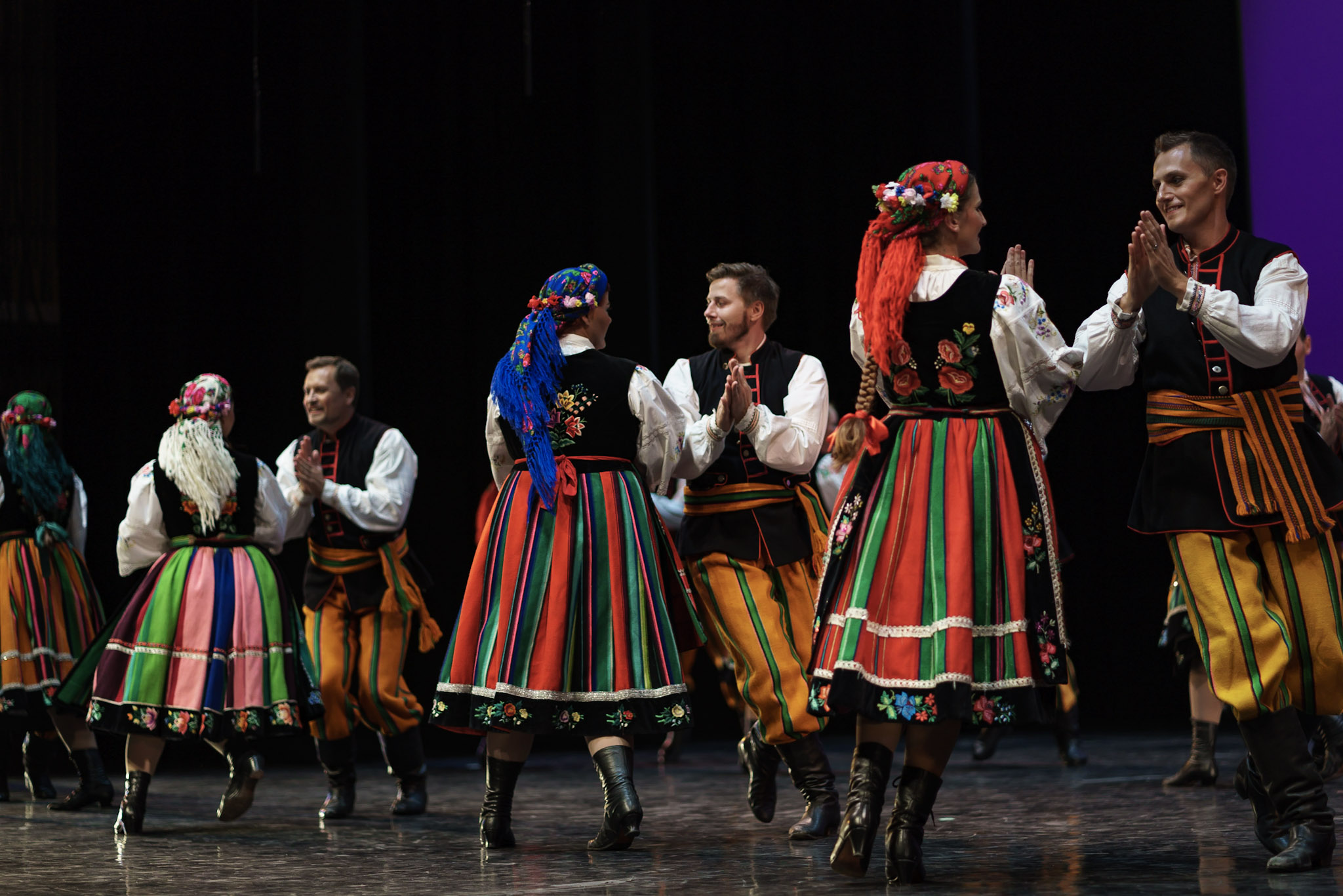
ŁOWICZ
This is a very popular dance from the Mazowsze region because of its beautiful medleys of songs and dances. The elegant and uniquely embroidered costumes depict the region’s rich landscape filled with beautiful plains and luscious forests.

U DUNAJA
Performed only by the women, the music and steps are influenced by the vast and rich culture of the traditional Gorale (highlanders) in the southern Poland area with influences from neighbouring Slovakia.
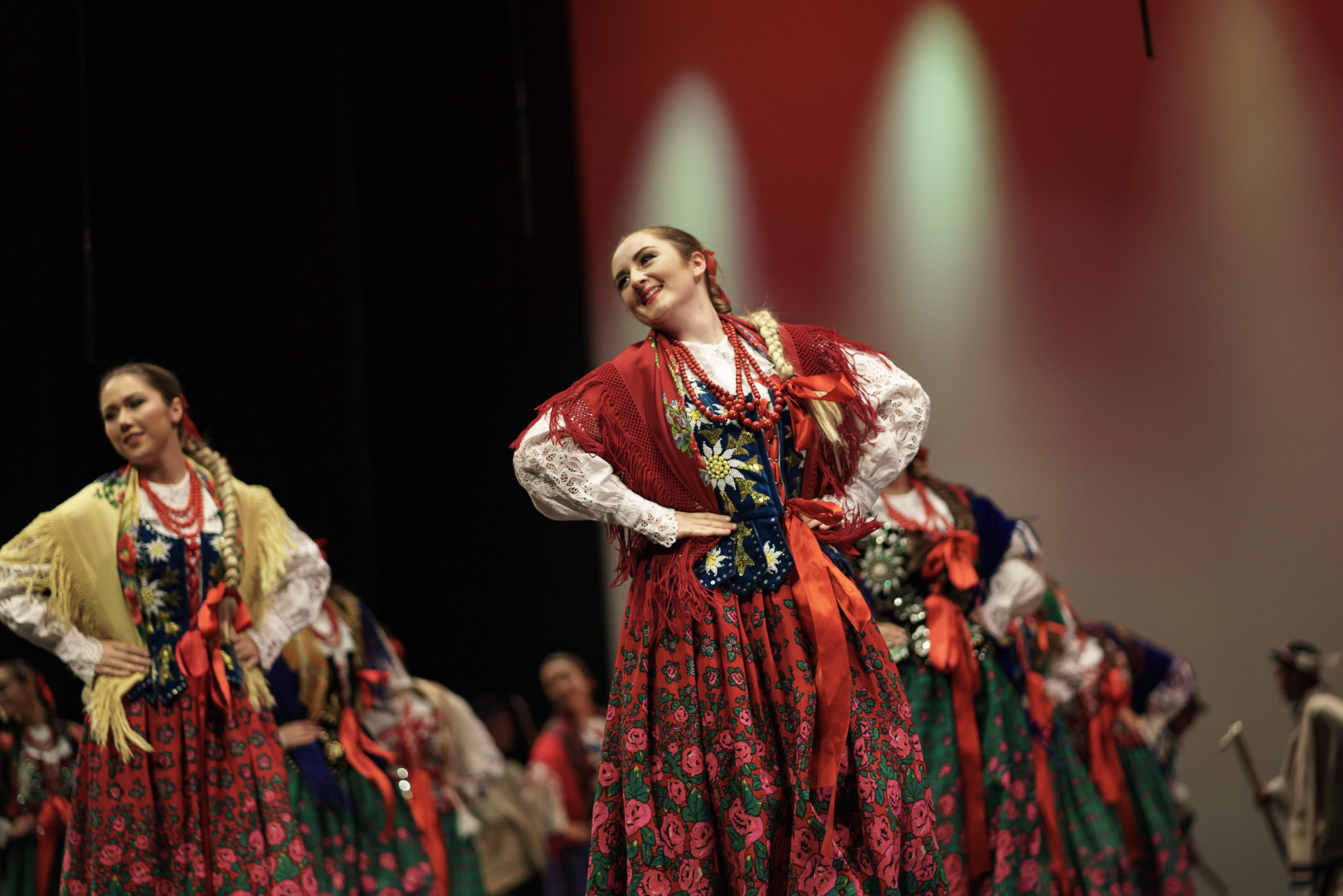
GÓRALSKI
The elements of the Polish highland dances are echoed in the music composed by Stanislaw Moniuszko in his opera “Halka”. Highlander culture is distinctive as it is rich in its architecture, music, and painting. The colourful costumes are highly original, reflecting the unique environment in which they were created.
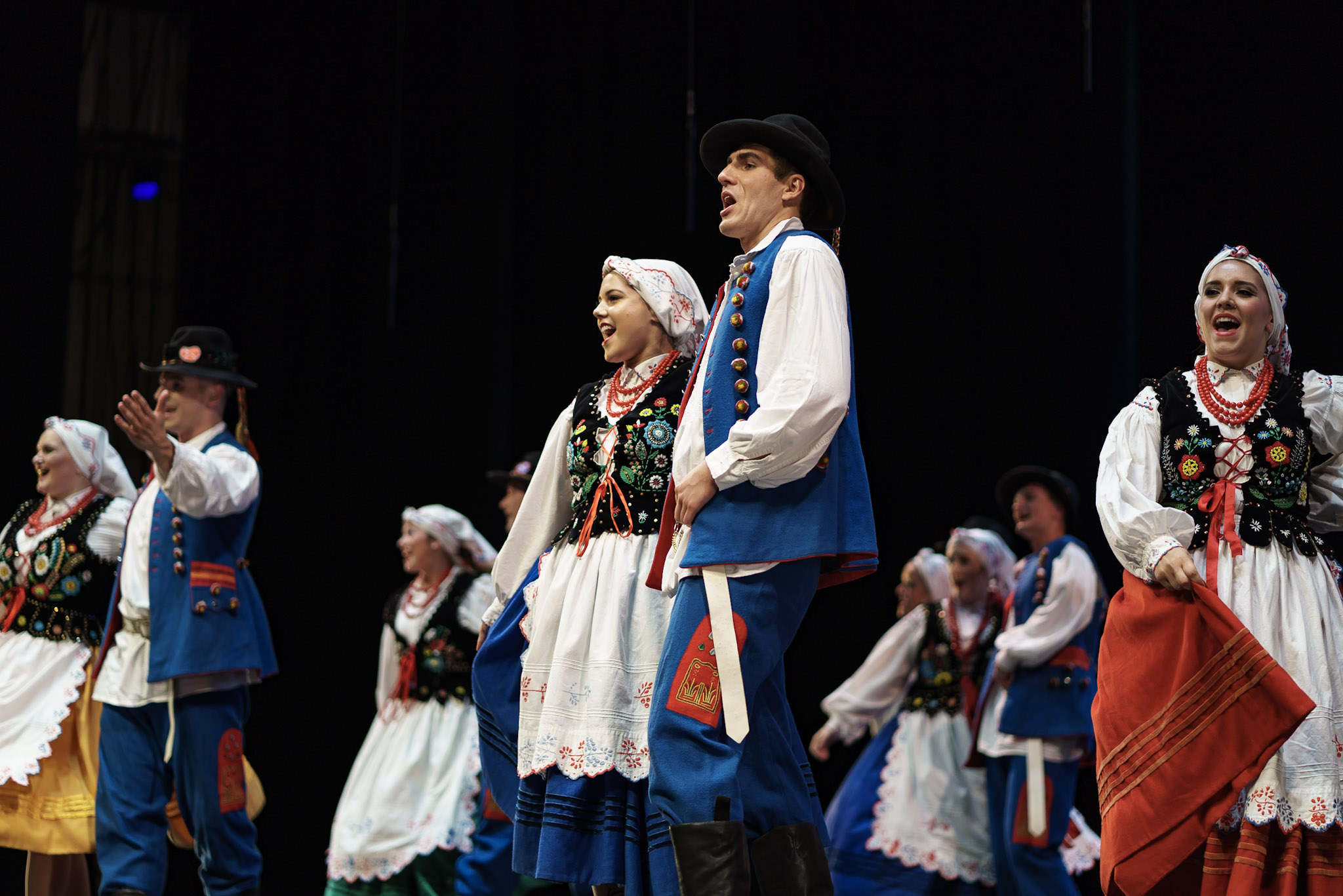
RZESZÓW
This is a selection of folk songs and dances typical to the Podkarpackie region in south-eastern Poland. Figures are lively and dynamic and abound in fast-spinning patterns. Most of the time they are danced smoothly and embellished with unusual jerky or quivering movements. This choreography dates to 1987.

POLONEZ
Dating back to the 17th century this dance was performed at the opening of royal functions. It is one of the five historic national dances of Poland. The graceful and elegant strides are accented by bows and turns. In Poland, this dance is traditionally performed at the senior prom by the graduating class.
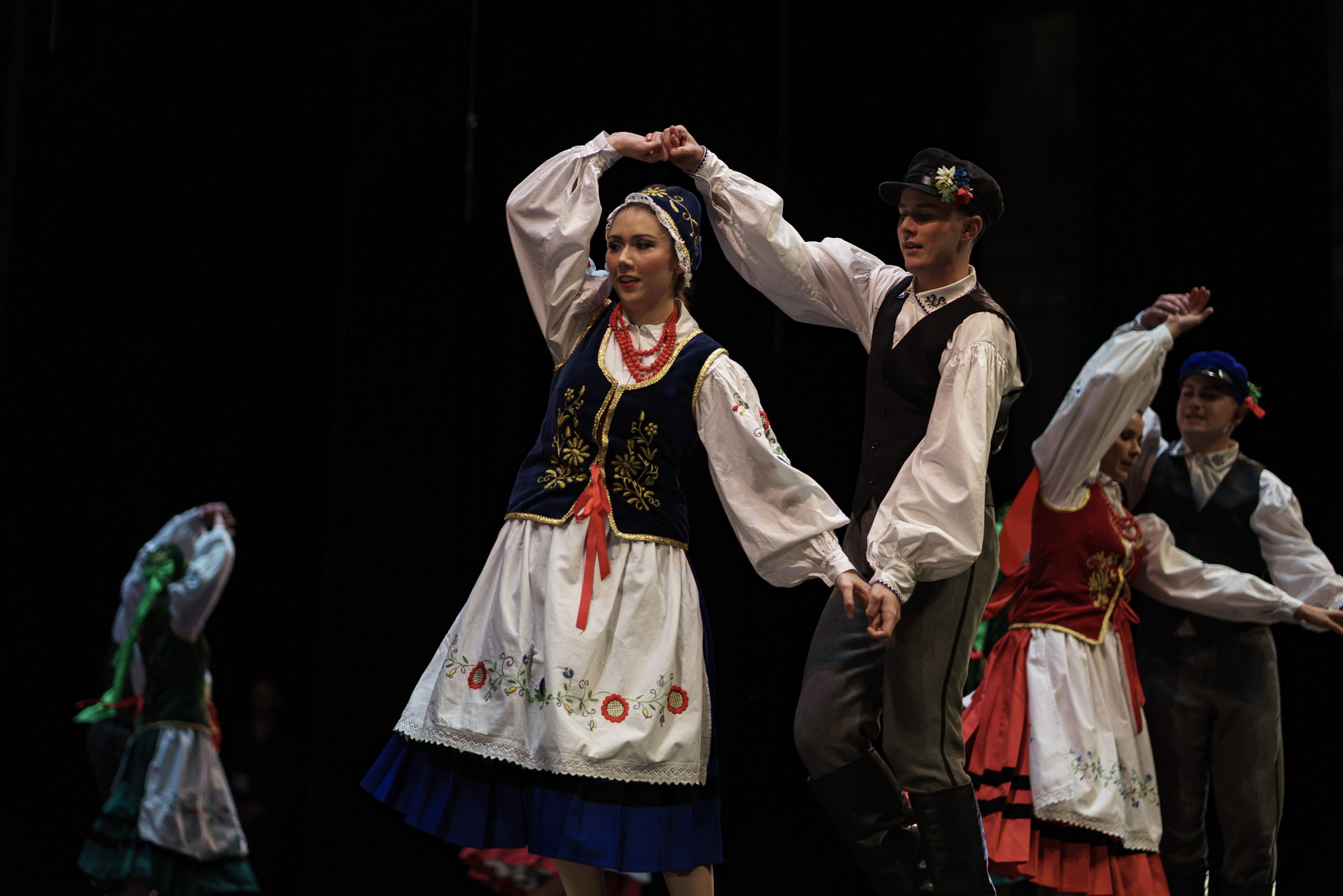
KASZUBY
The Kaszuby dances are from the Baltic area of Poland and are mostly gentle, joyful, and graceful. Although they have many characteristic traits of the dances from the neighbouring regions, they also reveal obvious Swedish and German influences both in music and in the steps. They can be divided into dances of the rural population and of people of the sea.

KRAKOWIAK
Krakowiak is one of Poland’s 5 national dances. The dance comes from the old capital city of Poland, Krakow, which is a vibrant centre of rich folklore, historic traditions, and the arts. It is one of the most popular and characteristic Polish folk dances with very lively, and long, easy strides demonstrating spirited abandon and elegance at the same time.
